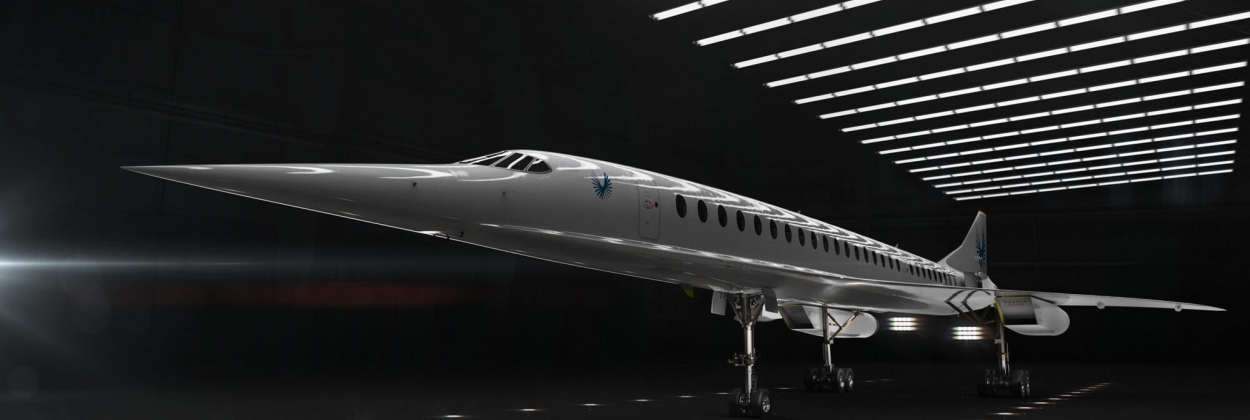The XB-1 is now set to complete its ongoing, extensive ground test program before heading to Mojave, California in 2021 for a flight test.
Taken on Oct. 7, 2020, the video in this post features the unveiling of the XB-1, history’s first independently developed supersonic jet and supersonic demonstrator built by Boom Supersonic, the aerospace company building Overture, the world’s fastest airliner.
To design and build XB-1, Boom recruited a team of experts from around the industry, forged relationships with key suppliers, and built a strong safety culture. XB-1 is slated to fly for the first time in 2021 and will undergo a 100% carbon-neutral flight test program. Boom’s innovations include developing one of the highest-efficiency civil supersonic engine intakes ever tested, demonstrating Boom’s ability to deliver a breakthrough in propulsive efficiency for Overture.
“Boom continues to make progress towards our founding mission—making the world dramatically more accessible,” said Blake Scholl, Boom founder, and CEO in the company press release. “XB-1 is an important milestone towards the development of our commercial airliner, Overture, making sustainable supersonic flight mainstream and fostering human connection.”
On the morning of Oct. 7 at 11 AM MDT, the world saw XB-1 fully assembled for the first time and heard from the team that designed, built, and is currently testing the aircraft. Boom’s XB-1 virtual rollout highlighted some of XB-1’s notable features include:

• Shape: XB-1’s 71-foot-long fuselage has been optimally shaped for high-speed aerodynamic efficiency.
• Materials: The carbon-composite airframe maintains its strength and rigidity, even under the high temperatures and stresses of supersonic flight.
• Wing: The delta wing balances low-speed stability at takeoff and landing with high-speed efficiency.
• Propulsion: Three J85-15 engines, designed by General Electric, provide more than 12,000 pounds of thrust, allowing XB-1 to fly at breakthrough supersonic speeds.
• Cockpit ergonomics: Guidance and feedback from XB-1’s test pilots played a key role in cockpit design, which was the product of hundreds of hours of human factors and usability testing.
• Forward vision system: XB-1 leverages a high-resolution video camera and cockpit display to give pilots a virtual window through the nose, providing superior runway visibility for landing.

Boom shared the virtual presentation stage with a number of aerospace leaders, Boom partners, and investors including:
• NASA Leaders and Astronauts: Maj. Gen. Charles F. Bolden, Jr, USMC (Ret.), 12th NASA Administrator and Capt. Robert “Hoot” Gibson, USN (Ret.)
• Chief Concorde pilot for British Airways, Captain Mike Bannister
• Supersonic: The Design and Lifestyle of Concorde author Lawrence Azerrad
• USAF Brig. General Ryan Britton.
The XB-1 is now set to complete its ongoing, extensive ground test program before heading to Mojave, California in 2021 for a flight test. At the same time, the company will finalize Overture’s propulsion system and conduct wind tunnel tests to validate aircraft design. When XB-1 breaks the sound barrier in flight, Boom will be finalizing the design of Overture, whose own rollout is on track for 2025.
Photo by Boom Supersonic

